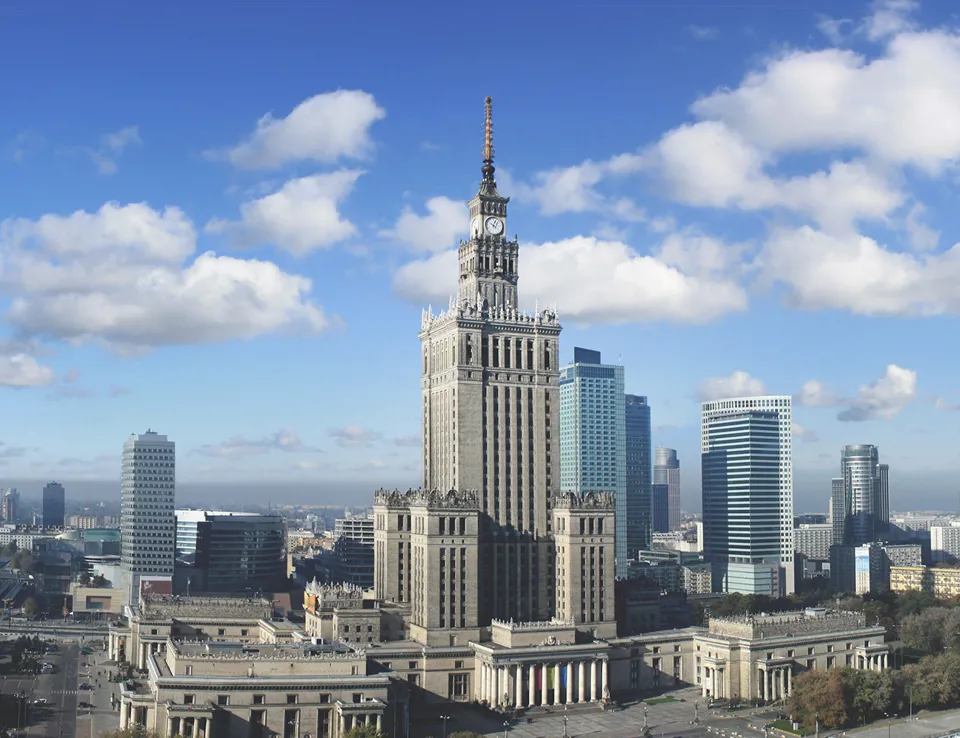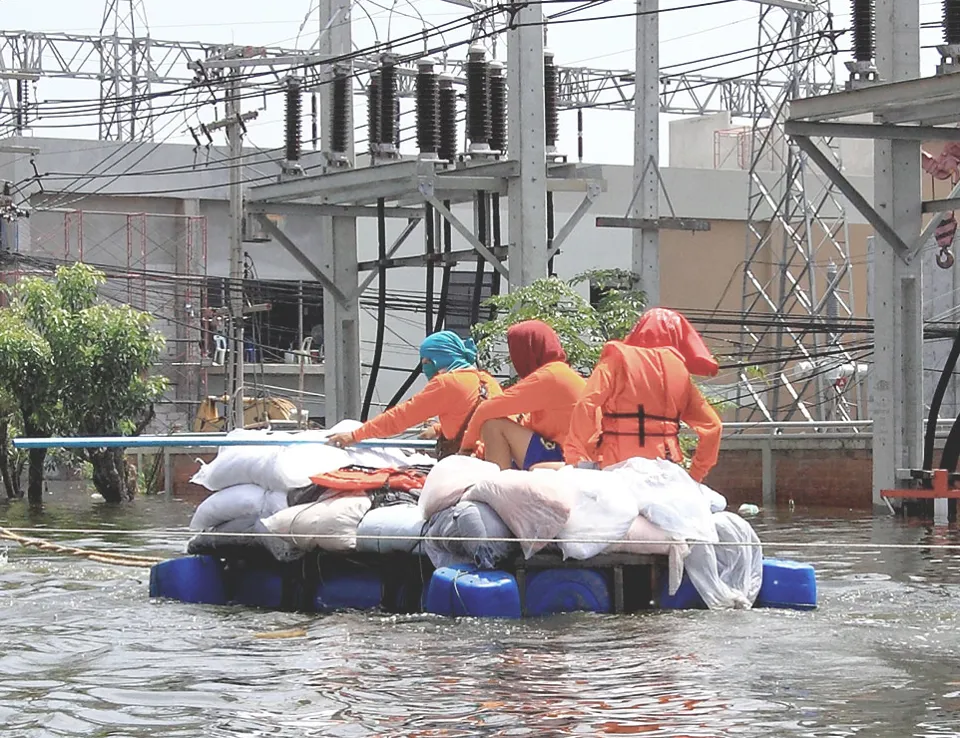A Climate Action Plan for Santa Cruz
07 Aug 2024
Home to more than half of the world’s population, cities have a vital role to play if we are to meet the objectives of the Paris Agreement.
On the one hand, they are a major source of greenhouse gas emissions. By some estimates, urban environments – which includes transportation and inhabited buildings – produce around 70% of all global CO2 emissions.
But as places of exchange - where ideas are formed, shaped and shared - they are one of most important cards in our possession. How our major cities implement responses, and the extent to which they are adopted by neighbouring communities, will have a significant influence on whether the world can rise to the challenge.
Which is why City Climate Action Plans are pivotal. They are the roadmaps set out by a city detailing how they will proceed from well-intended ambition to tangible action.
Flavia Carloni, a Lead Consultant at Ricardo, has devoted the past 15 years to helping major urban centres around the world devise and deliver their plans.
“As a global community we will only succeed in meeting the climate challenge if we follow a coordinated process. For example, at the very top we have the Paris Agreement, which set the challenge to 195 signatories of limiting the rise in global surface temperature to well below 2 °C above pre-industrial levels”.
“Then there are the Nationally Determined Contributions (NDCs), where countries detail their commitments and policies towards that goal.”
“City Climate Action Plans can be seen as the next level down. Since the most impactful actions to reduce emissions and improve resilience, such as transport interventions, flood management, climate-friendly planning, etc. need to be taken at a tactical level, these plans play are key to supporting NDCs and, therefore, link directly back to the Paris Agreement".
“And because every city is unique, with different challenges, different economies, and different resources at their disposal, these are sharply honed documents addressing local needs and threats".
“A Climate Action Plan brings together the science, the risks, the costs, the timings and the commitments. It is an entire community saying ‘this is what we want to do, this is what we have to do’.”
Flavia Carloni
Climate Action Planning Expert

Santa Cruz is Bolivia’s largest city and main commercial centre. Located on the Pirai River in the country’s eastern Tropical Lowland, the city' metropolitan region is home to more than two million inhabitants.
But with forecasts of rising temperatures and reduced precipitation, it faces what it describes itself as a ‘profound’ range of climate hazards over the short and long term, from declining air quality and water security to increased risks of flooding, wildfires and outbreaks of tropical disease.
In response, the city’s authorities, with funding from the World Bank, commissioned Flavia and her team - which included the expertise of local consultants - to assist in producing a City Climate Action Plan detailing how Santa Cruz can use the powers available to it to reduce emissions within its footprint, protect surrounding ecosystems, and help citizens adapt to a changing climate.
Assemble the team
Although every city has unique challenges, the process of preparing an action plan charts a similar course.
“The first step," says Flavia, "is to get buy-in from the various stakeholders who will need to be involved. Residents, the private sector and local administrators, for example. The way to do that is to involve these actors from the very outset. They will be much more committed to the goals and actions if they feel part of the process rather than simply invited to the unveiling of a plan they had no involvement in developing".
“The next priority is to find a way to ‘mainstream’ climate issues into the city’s broader planning frameworks and processes. Climate change is not just an environmental issue, and developing a climate action plan can’t be the responsibility of one department. Santa Cruz took the great decision of establishing a partnership between the planning and environment secretaries to co-lead the process. But it also ensured a structure was in place that secured the involvement of other secretaries, from transport to health and education. This what climate governance is about”.


of the city's CO2 emissions derived from road transport
It's also important to assemble a team that brings together subject experts alongside trusted local specialists to assess the current situation and build a consensus on what must be achieved.
Early in the development of the Santa Cruz plan, for example, a Greenhouse Gas Emissions Inventory was compiled to understand the sources of the city’s 6.5m tonnes of CO2e emissions a year. More than half (54%) was found to derive from road transport, marking an obvious future battleground.
“The strong backing of the city’s leaders meant we had access to local scientists, economists, business leaders and administrative staff to help us analyse policies and data sources", says Flavia.
"It gave us the credentials to host workshops with groups representing different aspects of day-to-day life – utilities, healthcare, transport and education providers, for example - to undertake exercises such as risk assessments and scenario planning, and also to listen to different industry sectors or residents from the densely populated central districts as well as from the suburbs".
Build the plan
Armed with this information, the team could begin defining the targets and associated actions. At the top level, the city set itself the challenge of achieving carbon neutrality by 2050, with an emissions reduction trajectory of 20% below a business-as-usual scenario in 2030, and 50% below by 2040.
Feeding into this headline goal is a list of 33 agreed priority actions which are categorised under themes such as planning and modernisation, ecology and resillience, and accessibility and inclusivity.
Where possible, actions are specific about targets: increasing the recycling of paper and plastic waste by 40%; the renewal of at least 30% of drainage infrastructure; ensuring 20% of all trips by 2050 are by bike or alternative transport; installing 24,000 LED lights by 2030, and so on.
Most importantly, the plan names the public body or local authority who will take on responsibility for delivering each action, alongside a forecast budget and funding strategy.
“By publicly allocating responsibility, the Santa Cruz Climate Action Plan hands these ‘agents’ the legitimacy to pursue the targets on the behalf of the community", says Flavia.
"Meanwhile, the inclusion of a funding strategy is also a major step towards implementation. It shows this is not just another policy document but a signal of the city's ambition to provide a better environment for its citizens, detailing how, and with what resources, it will implement policies to mitigate emissions and increase resilience".
"And that’s the true value of a City Climate Action Plan. It is an entire community saying, ‘this is what we want to do, this is what we have to do’.
Climate adaptation and resilience
Our experts support all stages of the development and implementation of climate action plans. Our climate adaptation and resilience capabilities include:
- Identification and prioritisation of climate vulnerabilities, risks, and adaptation options.
- Development of costed implementation plans for adaptation actions, associated finance strategies and institutional arrangements.
- Supporting the evaluation of climate adaptation policies, strategies and programmes.
- Supporting mainstreaming of climate adaptation in legislation, regulation, statutory guidance and standards.
- Development of international guidance, tools and knowledge products associated with all aspects of climate adaptation planning.





 Follow Ricardo plc for regular updates
Follow Ricardo plc for regular updates




